Ahead of the rematch against the Maple Leafs in Toronto, Golden Knights head coach Bruce Cassidy discussed the threat William Nylander creates for the opposition and the challenges of matching up against the Maple Leafs’ depth when their top talent is spread across three lines.
What is the blueprint to success against this Leafs team after a tough game against them last week?
Cassidy: You have to check well and stay out of the box. You need timely saves. They are a good offensive team. They are going to get looks. You have to be opportunistic and score some goals. You can’t expect to go out and play a 2-1 game against a really good offensive team. We are going to have to score a little bit as well.
The blueprint is the opposite of how it worked out in Vegas where we were chasing the game from the middle of the first period onward. That part has to be better. I did like our discipline. We didn’t take many penalties.
I thought Matthews had some looks, but he wasn’t the driving force. It was the middle of the lineup that did a lot of damage, and the bottom of their lineup was great. Their fourth line had us hemmed in all night.
What sort of challenge does it present when Toronto splits up Nylander, Tavares, and Matthews-Marner onto three separate lines?
Cassidy: We were able to do it last year. I think it can get to teams. Eventually, you will get — I don’t know if mismatch is the right word — an advantage if you are able to consistently do it. I think that helped us a lot late into the year and into the playoffs.
I like that thinking myself. Players have to be on board. People forget sometimes that the individual has to be willing to maybe sacrifice for the good of the team when you do that. Maybe the individual numbers aren’t as good, but there is a better balance.
I think it is going to help Toronto, and it looks like it has recently. We will see over time.
How do the conversations go — and how delicate are they — when asking a top-six player to go down to the third line?
Cassidy: You’d be surprised. It’s a mindset. “Wait a minute, I am on the third line?” There is the terminology with the top six. Maybe people should start calling it a top nine. It takes some of that away. That is what a lot of good teams have now.
It used to be a top six, a third line for a matchup, and a fourth line with energy and toughness. Now, I think there are a lot of teams that can roll three lines. There should be a top nine and then that grittier line.
Toronto has the ability to do it. So do we when they are healthy. I would never call William Karlsson a third-line center in this league, but it is a luxury to have him play against the other team’s third-line center.
What are the benefits of playing Toronto again so soon after the last matchup?
Cassidy: For a coach, you have less work to do because you just saw them. Your pre-scout is fresh on your mind.
The benefit is that we didn’t play well. Our guys are a proud group and a competitive group. They will want to put their best foot forward.
Adin Hill was pulled last time against the Leafs. Based on your time around him, how has he responded?
Cassidy: He will be fine. I rarely pull the goalies — probably once a year for each guy on average. It just happened to be a year where I felt we weren’t playing well, so it is a message to the group. Logan (Thompson) had come off of a shutout against San Jose.
We knew each would play a game. We picked Logan for the Ottawa game and Adin for Toronto. We just made a decision based a little bit on performance and a little bit on getting the team’s attention.
At the end of the day, we didn’t respond well enough in front of Logan, either. I wouldn’t put it on Hilly. It was just our team performance.
The Leafs are dressing six lefties on defense. Is that something you can take advantage of?
Cassidy: I think so. On D-to-Ds in the neutral zone, if you take a good angle, you can limit where they go with the puck or force a quicker play. When the puck is coming around the boards in the offensive zone, you recognize that you can get on top of them a little quicker, so you have to take it backhand to forehand.
I don’t know how well they pivot on their offside — stuff like that you don’t know until you play against them a few times — but in general, there are a few opportunities to do that. You also have to be mindful of the one-timer on the D-to-D. You might have to cheat out a little higher on it if you want to be in a better position to block.
Do you have any theories on why there are so many left-handers in hockey?
Cassidy: I don’t know. I read an article a while ago about the U.S. kids and more of them shooting right. It has something to do with baseball and the way they swing a bat. I don’t know how much proof there is to that. Otherwise, I don’t know.
We ask a lot about Auston Matthews, but William Nylander is leading the Leafs in scoring. You saw him a lot in your Boston days. How does his game look to you now by comparison?
Cassidy: He always did damage against us in Boston. If you look at his numbers, I bet he scored a lot against us, and from the house inside — the areas we try to protect. He was really good one-on-one.
He has that wrist shot. Tuukka Rask probably doesn’t want to hear this, but I think he beat him quite a bit with that shot. He had a great release.
For some reason, against us, we weren’t able to contain him very well. Maybe that was a pocket of one year, but to me, I think he is so good at changing his pace and getting the puck out where he can fake that shot. I think he freezes D and goaltenders, for that matter, taking that extra step or second to find the shooting lane. He is very accurate.
He is a real good hockey player like a lot of guys in Toronto. He is a guy we certainly have to be mindful of. Now, they have moved some pieces around, so it makes it that much more difficult.
Now that you have your six-man defense corps healthy and together, what do you like about them when they are intact and clicking?
Cassidy: No matchup issues for us when they are going well. On the road, there are no concerns about, “Hey, you got this matchup or that matchup.”
Last year, in the playoffs, I will use Hague and Whitecloud (as an example) as they were considered the bottom pair, and the other two were probably interchangeable. We used them up against Barkov and Tkachuk a lot in the playoffs. They were up to the task.
Tonight, if Matthews jumps on for a shift that we maybe haven’t mapped out, we are not going to be hauling them off the ice. We trust them in every situation. That is what I like best about them. They can all play against anybody.
When Mark Stone was out last season for you, the power play struggled. What is your message to the unit now?
Cassidy: We are trying to dumb it down. We are just converging on the net and playing a downhill approach.
Years ago, when I was in Boston, the Leafs had Marner and Matthews come downhill and sling it to the net. Kadri and Tavares were there. It was a pretty effective power play. Now, Toronto has grown their power play and they are moving to different spots.
We have to be consistent in our approach like they were back then. It might be predictable, and that can hurt you in terms of the other team knowing what you are doing. They can kill easier, but by the same token, if we know what we are doing and we can consistently do it, I think we will end up getting a decent result.
You take Jack off of it, and that moved Marchessault to the other side. You take Stone off of it, and you have a different guy in the bumper and down low. There have been some adjustments, and Theodore is back on it. He missed three months of it, and he is very good at the top. He is mobile and makes those seam passes a lot of guys can’t because they don’t have that vision.
Losing Stone and Eichel is tough, but at least we have the guy up top who can run it for us.
How difficult has it been keeping your group engaged in the regular season coming off of the Cup win and knowing where you ultimately want to go?
Cassidy: It is funny. They say the (Stanley Cup) hangover… We didn’t have it in October. It hit us in January and February. Maybe that is the learning curve we are going through: The hangover comes later in the dog days.
Now, with guys out, the good thing about it is that the urgency should be there for the rest of the group. We have to get in. We are not automatic. You never are in this league. If you have a bad couple of weeks, anything can happen. We are not talking about that, but we do know it is in front of us.
It is harder to win now without your top guys. It just is. They are guys who make plays that make a difference. We have to be buttoned up. As a team, we can still play very well and not get points because those guys didn’t make the extra play that they typically do for you.
Any team that is missing top guys will go through that. The message now is that we can’t give points away by not being prepared to play.
That is what happened in the last 10 minutes of the first period against Toronto. I actually liked our start. I thought we were pretty good in the first seven or eight minutes, but then it kind of came unglued.
How was your visit to the Hockey Hall of Fame?
Cassidy: I went on Sunday by myself. We had lost four in a row at home. We had just lost to the Senators. You think, “Boy, I can’t coach a lick.” And then you go in there and see your team’s ring in a little stall with the Knights’ Cup stuff. It gives you a little confidence boost. It was good that way.
I love that stuff. I am a hockey junkie. We got to see some of the archives yesterday after practice, too, including some of the old sticks. Bobby Orr’s stick — I grabbed the one he scored 200 goals with, and you take a look at how heavy those things were back then.
There is so much cool stuff in there from hockey cards to old jerseys. I was like a kid in a candy store.
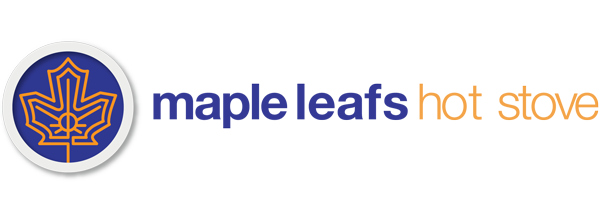

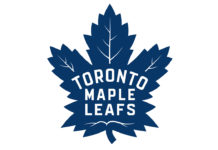




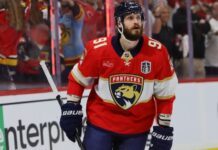




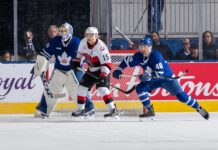





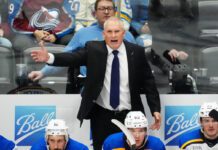


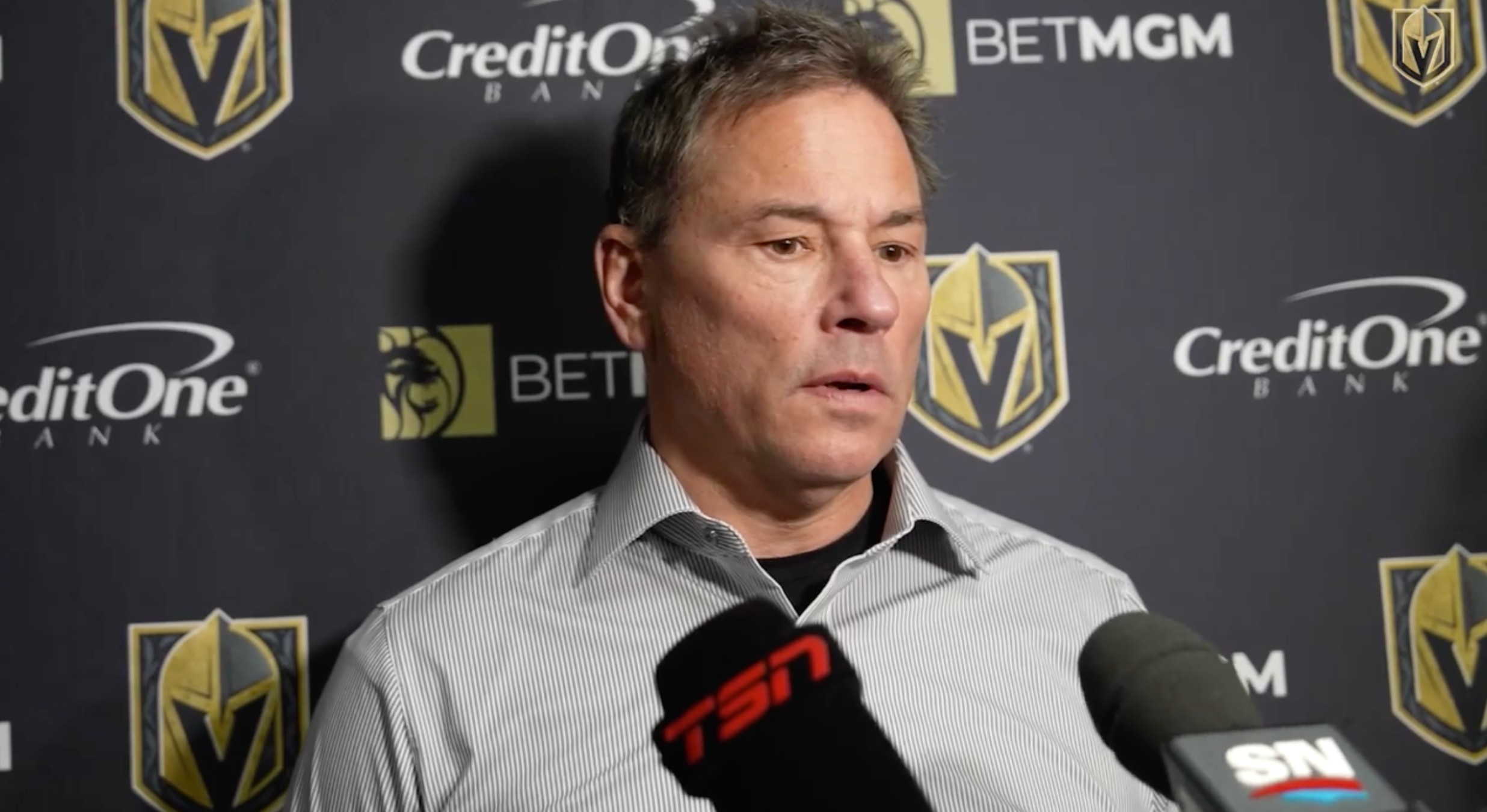
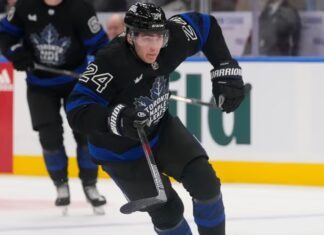







![New Leaf Anthony Stolarz on the opportunity in Toronto: “In Florida, I knew my role as a backup… Now, [Joseph Woll] and I are competing for starts… As a goalie, that’s all you can ask for” Anthony Stolarz, Stanley Cup win, now Maple Leaf](https://mapleleafshotstove.com/wp-content/uploads/2024/07/anthony-stolarz-sc-100x70.jpg)
